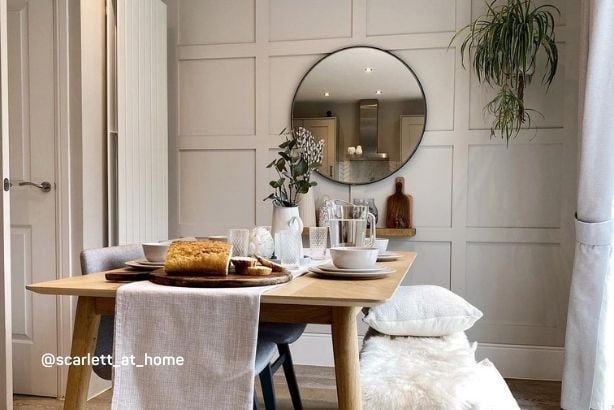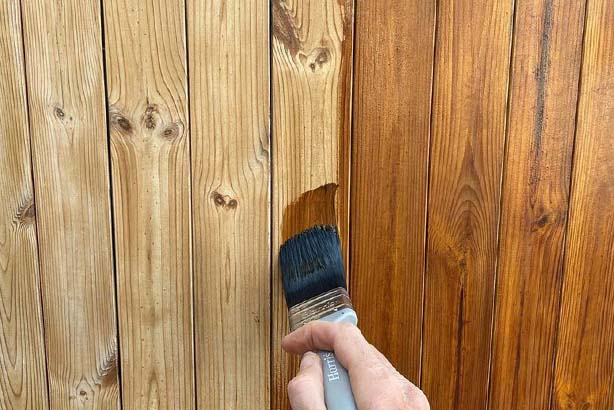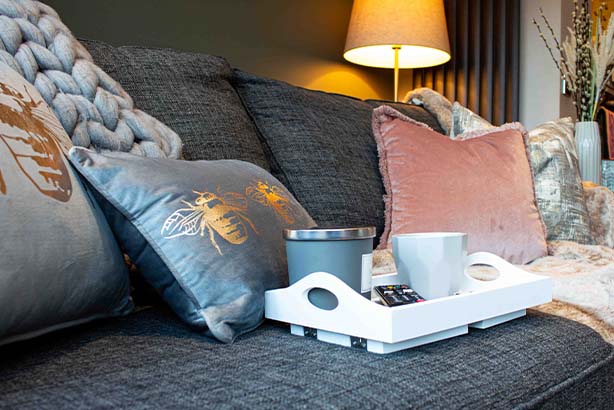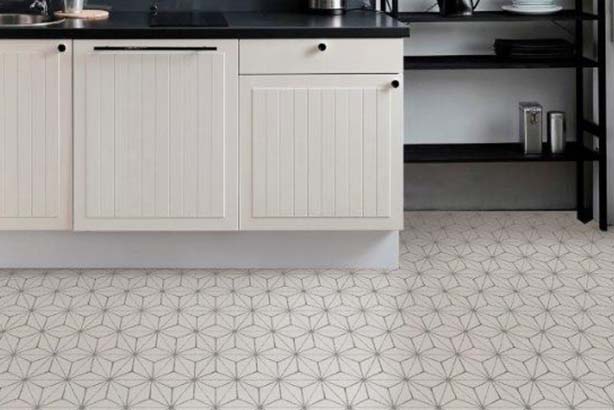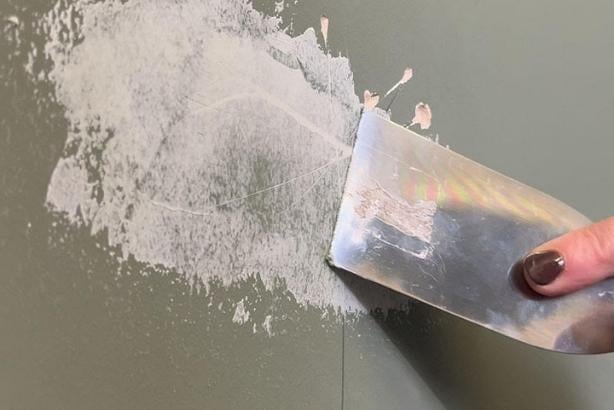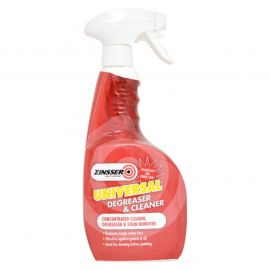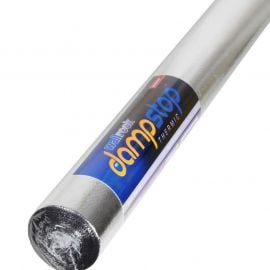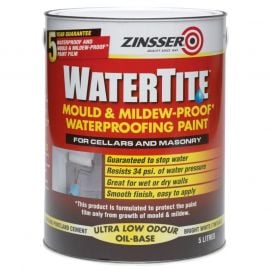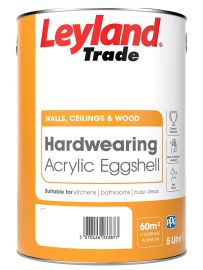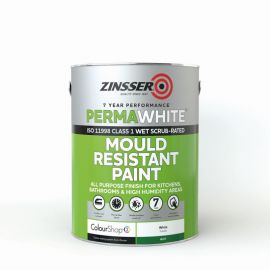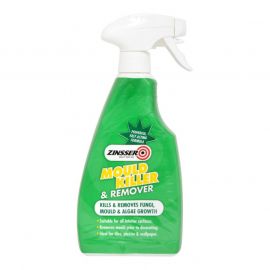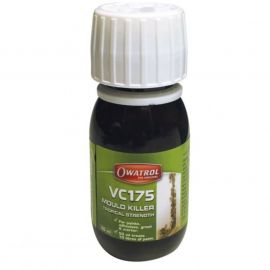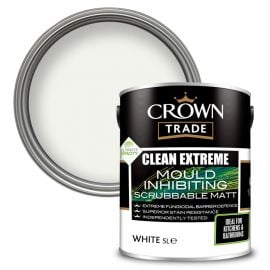This site uses data saved in the cookie files and other technologies. If you agree to use cookie files click 'Allow Cookies'. Otherwise, click 'Cookie Settings' to allow or prohibit some cookie categories.
10% off all wallpaper, limited time only. No code required! close
Site Settings
Use the options below to customise your experience on the site.
Include VAT in Prices
Currency
If you are new to Decorating Centre, simply click register and we'll ask you for a few details.
For businesses, sign up to our trade account.
At this time of year the topic of mould is a big one. It's not a sign of an unkempt home but rather a sign of the weather conditions where we experience more moisture within our homes, especially older buildings! If you’re having issues with mould in your home the core cause could be leaks in your roof, windows or pipes or in the aftermath of flooding. Whilst these are issues you need to resolve with building work there are key tips and products you can follow for reducing the growth of mould in your home. One of the key areas you’ll experience mould growth in any home is in your bathroom so we’ll talk through how important it is to make the right choice for your bathroom with wallpaper or paint to ensure you can maintain it.
In this guide we’ll cover:
- Identifying mould versus mildew
- Tips for removing mould & mildew from wallpaper
- Tips for removing mould and mildew from painted surfaces
- Our favourite products for preventing mould and mildew
Mould or Mildew?
Mould and mildew look similar but there are differences in how they should be treated. Mildew is a surface fungus that has a grey or white fluffy appearance. You’ll usually find it on surfaces in moist areas like your bathroom or kitchen. Mould is a larger fungi infection that has a black or green appearance and looks a little slimy in comparison. If left untreated, mould can release toxins into the air which can have a negative effect on your health so it's really important that you keep on top of the removal of mould and mildew spots in your home.
Removing Mould From Wallpaper
So first up let's remove the mould spots that have grown on your wallpaper. In an ideal world you will know how washable your wallpaper is. (See our wallpaper symbols explained blog here to check your symbols!) If you’re in a bathroom or kitchen then you will hopefully have used a washable wallpaper to ensure you can maintain it. If you’re not sure on how washable your wallpaper is then it's a good idea to test the below methods in a small, inconspicuous area before tackling the full wall. Wallpapers that aren’t washable may experience colour running, or you may rub away the pattern which is why it's important to test an area first!
Don’t forget to pop on your gloves when working with mould before spraying with the Zinsser Mould and Mildew Killer spray. This product not only kills and removes the fungal mould and mildew it also effectively removes the stains caused by mould, fungus and mildew. It's a waterbased product perfect for use with wallpaper, or tiles, wood and plaster. This is a great one to have in your cupboard under the stairs so you can pop it out and maintain your kitchen or bathroom area (or anywhere you’re experiencing mould!) to avoid the problem from becoming so large it poses any health concerns. If the mould problem has been really bad and the wallpaper is peeling away from the wall with visible mould beneath it, it may be worth redecorating the room. You can view our blog here for how to remove wallpaper without a steam stripper. Once removed you can clean the surface using the mould and mildew killer spray. Once clean and dry you have a couple of options before wallpapering again.
Step By Step Guide For Removing Mould From Your Wallpaper
We’ve covered quite a bit of information there so here are some helpful quick steps for the physical removal of mould from your wallpaper.
Step 1: Test an inconspicuous area of your wallpaper to see if it's a washable type of paper.
Step 2: Remove signs of organic mould growth with a product like the Zinsser Universal Cleaner and Degreaser.
Step 3: Treat the area with the Zinsser Mould and Mildew Killer Spray.
As we mentioned at the start of this blog the cause of mould and mildew is usually linked to larger building works like leaks. If you’ve identified the problem and simply need to re-seal your windows we love the Soudal Fix All Flexi Sealant for bonding and sealing work. If it's a larger problem then you will continue to experience mould and mildew growth until that is fixed however there are some ‘sticking plaster’ type products which can help to slow down and prevent the growth of mould and mildew. Applying something like the wallrock dampstop thermic can hold back some of the moisture and slow the growth of mould. You would then apply your wallpaper on top of this thermic base layer.
Removing Mould From Painted Surfaces
As above, we love to recommend the mould killer and remover for the removal of mould on painted surfaces. Once again it's important to understand how ‘washable’ your paint has been. Hopefully in a bathroom or kitchen you opted for a washable finish like a soft sheen or silk or a scrubbable finish like acrylic eggshell or hardwearing matt. If you’re unsure, test in an inconspicuous area and watch out for paint coming away on your cloth and leaving a burnishing mark that shows where you cleaned. If you’re finding that the paint surface you’ve used hasn’t been durable enough for cleaning then it may be worth considering redecorating the room.
Step By Step Guide For Removing Mould From Your Painted Surfaces
Step 1:Test an inconspicuous area of your painted wall to see if you've used a washable paint type (unless you already know it's a washable surface!)
Step 2: Remove signs of organic mould growth with a product like the Zinsser Universal Cleaner and Degreaser.
Step 3: Treat the area with the Zinsser Mould and Mildew Killer Spray.
Step 4: Ensure the surface is fully dry before trying to repaint it if you plan on repainting. For tips on which paint product to use to help prevent mould growth, we’ve covered that below.
If you’re going to tackle redecorating the room then begin with cleaning down the mould and mildew with the mould killer and remover spray. It contains a fungicide that removes mould and is ideal for preparing mould stained areas before painting to give a better and longer lasting finish. Once you’re confident you’ve removed the existing mould then we would recommend opting for the Zinsser Perma White product. This is our go-to product especially in bathrooms, kitchens or even conservatories where you will experience high humidity. Don’t be put off by the name. Perma White originally just existed as a white product and the name worked then, it showed that the special properties within the paint meant that it stayed white…rather than being covered in lots of black mould. It has been developed since then and is now tintable to any colour and available in both a matt or satin finish. It is a mould resistant paint that contains a biocide which protects against fungal degradation. The paint film is designed to resist cracking, peeling and blistering so it really is ideal, especially when being used in a bathroom where the heat from your shower in addition to the humidity and moisture can cause all of those issues! In addition to this it has its class 1 scrub rating meaning you can scrub the walls clean without damaging the paint film thus maintaining your room perfectly.
Our favourite products for preventing mould
So we’ve covered our favourite product for killing and cleaning your mould stains (the mould killer and remover) and also some top tips for being able to maintain your home and clean mould and mildew stains (think washable wallpaper and washable paint finishes!) but there are some additional products that can help to slow down and prevent the growth of mould and mildew. We’ve already mentioned the wallrock dampstop thermic, the soudal fix all sealant and our go-to paint Perma White but here are some other favourites below.
- Hardwearing Acrylic Eggshell - the acrylic eggshell products are ideal for use in lower humidity rooms that can still experience some moisture (like your kitchen). Scrubbable and built to reduce the opportunity for mould and mildew growth.
- Clean Extreme Mould Inhibiting Paint - a scrubbable matt paint which is stain resistant and defends against mould growth.
- Watertite - a waterproofing paint that is guaranteed to keep out water whilst containing a biocide to protect the coating against fungal degradation. Ideal for basements.
- Polycel sealant remover - once a sealant has failed and is letting moisture through its barrier it needs removing before new sealant can be applied. This product is quick and easy to apply, remove the existing sealant before reapplying.
- Owatrol Mould Killer VC175 - a liquid additive that will provide protection against mould growth for your paint. Add a few drops to products like paint, timber stains or even grout to prevent mould and mildew growth. This will not affect the texture of the colour of the paint.
- Toupret Humistop Anti Damp Treatment - a filler and binders product that helps to block any moisture providing a damp treatment to brick, concrete, stone and previously painted surfaces.
To keep it simple we’ve linked all of our Anti-Mould paints together here.
Key questions asked when dealing with mould.
We get asked a number of questions when it comes to tackling mould, especially mould in the bathroom where it's most commonly found. Hopefully we’ve covered the bulk of these questions throughout this guide but we do have some additional top tips for cleaning mould below.
How do you clean mould off bathroom sealant?
When trying to remove the black mould spots from your bathroom sealant you can use your Zinsser Universal Cleaner and Degreaser. If you’re finding the mould spots particularly hard to shift (which is often the case with sealant) then white vinegar is a great product that you can usually find around the home that is great for use with mould. Create a cleaning spray using half white vinegar and half water and if you have a spray bottle decant it into there. Spritz onto your problem area and give it some time to work then after a few minutes scrub it clean using an old toothbrush or other small brush! If you’re finding mould is growing by your sealant then it's likely that it has started to fail. Sealant is a waterproof product so mould shouldn’t be able to grow on it however if its losing adhesion as its older or poorer quality then the mould will be growing behind. Once this has happened you need to remove the sealant before applying new. Applying over the top of old sealant will not seal the area. Use a product like the polycell sealant remover and then the Soudal Fix All sealant when reapplying.
How do you remove mould from bathroom tiles?
As with the mould on your bathroom sealant you can use your Zinsser Universal Cleaner and Degreaser on mould that grows on your bathroom tiles. The white vinegar home remedy solution will also work well on your tiles and grouting.
Can you paint over mould in the bathroom?
In short, no. Before you paint your bathroom if you are experiencing mould you will need to remove the mould. We’ve covered the best steps for doing this earlier in the guide here so give those a read. Once you’ve cleaned the mould then take a look at our favourite products to avoid mould growth here.
Hopefully you’ve found this guide helpful for covering our top tips on removing mould from wallpaper and painted surfaces in addition to our favourite products to use which help to either maintain an area and keep them cleanable or products which actively prevent the growth of mould or mildew. If you’re still unsure and require any further advice then please just drop us a message or call as we always love to help. You can reach us on whatsapp, live chat, social media DM’s, emails or at the end of the phone!
Helen x
